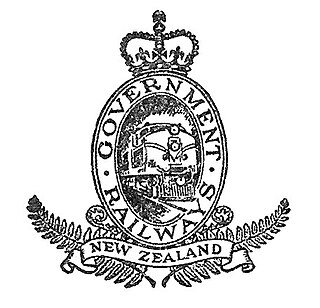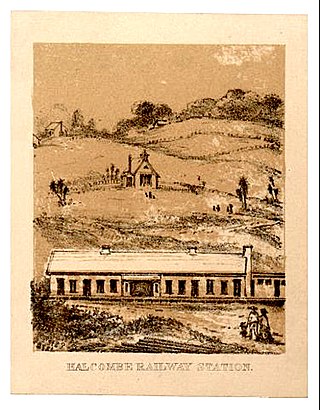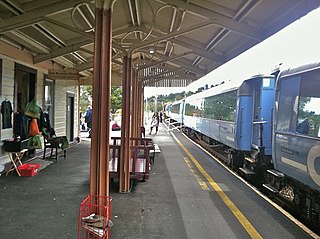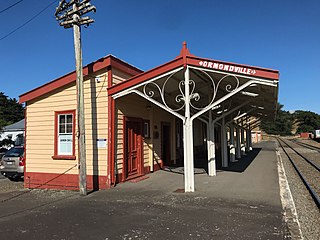New Zealand
The first refreshment room was at the country's first station, Christchurch, which opened in 1863. [9] In 1874 Otago Province passed a law to allow alcohol to be sold. [10] By 1898 there were refreshment rooms at Auckland, Mercer, Te Aute, Waipukurau, Woodville, Kaitoke, Hāwera, Aramoho, Halcombe, Palmerston North, Patea, Christchurch, Ashburton, Timaru, Oamaru, Palmerston, Dunedin and Clinton. [11] and in 1909 also at Ohakune, Te Kuiti, Marton, Masterton and Totara Flat. [12]
The Refreshment Branch of NZR was set up as a separate unit in August 1917, [13] when NZR took over the rooms of 8 previous lessees. [14] By 1935 NZR had 4 sit-down dining rooms, 18 stalls and 30 counter refreshment rooms. [15] Stations with rooms in the 1930s included Ohakune, Whangārei, Paekakariki, Marton, Palmerston North, Woodville, Waipukurau, Taihape, Mercer, Frankton, Taumarunui, Putāruru, Hāwera, Kaitoke, Patea, Maungaturoto, Tauranga, Helensville, Paeroa, Masterton, Te Kuiti, Aramoho, Napier, [16] Kaikōura (1944), [17] Waipara, [18] Christchurch, Otira, Ashburton, Oamaru, Palmerston, Dunedin, Milton, [19] Clinton, Gore, [13] and Queenstown. [15] In the late 1940s rooms were converted from table to counter-service to save staff and speed service; [18] for example 600 people were served in 7 minutes at Ashburton. [20] Customer numbers peaked at over 8.5m a year during World War II. Closures then included Marton in 1954, Frankton and Taumarunui in 1975, and Oamaru in 1980. [15] In 1969 rooms remained at Whangārei, Wellsford, Auckland, Frankton, Hamilton, Rotorua, Tauranga, Te Kuiti, Taumarunui, Taihape, Hāwera, Wairoa, Napier, Waipukurau, Palmerston North, Wellington, Masterton, Otiria, Christchurch, Kaikōura, Springfield, Otira, Ashburton, Timaru, Oamaru, Palmerston, Dunedin, Clinton, Stillwater, Ranfurly and Lumsden. [21]
Cafes remain at some stations, such as National Park, [22] Ohakune, [23] Otorohanga [24] and Wellington. [25]
A railway refreshment room is a major part of the New Zealand folk song "Taumarunui on the Main Trunk Line".













